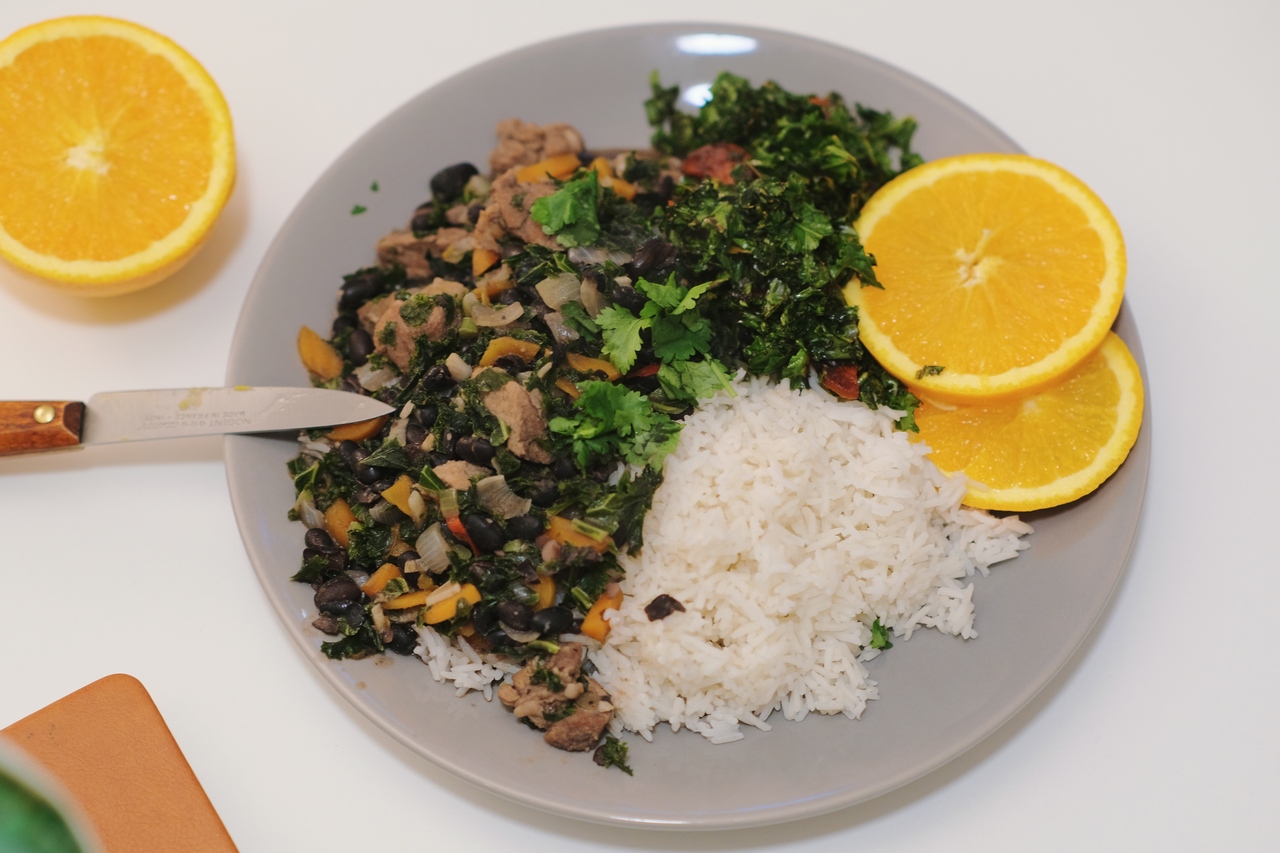Feijoada

Brazilian bean and pork stew with kale, spiced sausage, rice, and orange, in my Amsterdam kitchen, 2021. (also, it is that time of the year again where there is no more daylight once I am starting dinner. sadface)
A staple dish in Brazil: rice and beans in a stew of pork. This dish is eaten across many places in the Portuguese-speaking world (feijão means bean). The stew would traditionally contain pieces of salted pork and spiced sausage (paprika and garlic). I remember talking with my Brazilian roommate in Helsinki and he suggested I make a famous Brazilian rice and beans dish for my project. Not soon after, I left Finland, and I forgot what the dish was called. However, I am now pretty sure he meant feijoada.
For instructions, I went off of the video of a Brazilian lady and the Wikipedia page. Crucially, I modified both recipes a bit to include more vegetables. Apparently this is also something they do in Bahia and Sergipe, in contrast with the rest of the country, where they prepare it strictly with meat and beans. But because it almost felt like a sin already to be buying any meat at all, I had to balance it out with some carrots, onions, and additional kale.
Try to find some smoked/salted pork trimmings. I cut up some pork shoulder and salted it beforehand. Start by frying off your meat in a large pan. When every little bit of surface area has been seared shut, quickly throw in some aromatics (I used garlic and chili pepper). After a minute of stirring and releasing flavors to the fat bubbling in the pan, add onions and carrot. Soften everything for five to ten minutes.
Pour in boiled black beans with enough of their liquid to just cover everything. Simmer away for a while, adding a lid on top if necessary (to preserve liquid and steam everything more efficiently), or without, when we want to evaporate more of the water and thicken the stew. Nearing the end, stir in shredded kale.
On the side, quickly fry some Brazilian/Portuguese salted-and-spiced sausage (sadly, I had to make do with Spanish chorizo) together with a bit of kale, until both are nicely crisped up without being burnt.
Now traditionally, I should have made farofa, which is a side dish comprising toasted cassave flour. However, Dutch supermarkets being very Dutch, I could find no such thing and it had already gotten too late for me to find a proper shop that would carry it. (Just between us, honestly, I think there are already plenty of starches in the dish as is, so not a big loss.) When you find some, congratulations! You can mix it with some of the sausage we crisped, and then read the Wikipedia article to figure out what you are actually supposed to do. It is meant to complement the taste of meat very well.
Serve. Ladle some of the stew on a plate, then add steamed white rice; half on top, half to the side. I added my kale/sausage mixture next to that. Finish with some slices of orange, as a palette cleanser and nice refreshment during the, arguably quite heavy, meal.